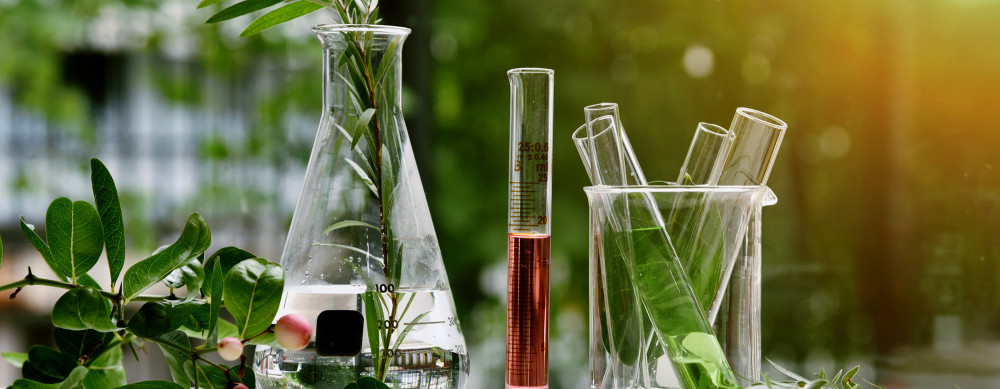Updated ecolabel for firefighting foams expanded to include Class A firefighting products for wildfires, structural fires and other combustible materials
{file:2327:url}Clean Production Action’s updated GreenScreen Certified for Firefighting Foam now includes both Class A and Class B foam products and wetting agents.
Earlier this year Clean Production Action released the first ecolabel for firefighting products, GreenScreen Certified™ Standard for Firefighting Foam version 1.0, to certify PFAS-free* products for suppressing fires from flammable liquids such as gasoline (Class B fires). Responding to market demands for communicating firefighting products with environmentally preferable chemistries, today Clean Production Action released version 2.0 of the ecolabel, adding Class A foams and wetting agents to the standard.
"We knew an expanded ecolabel for firefighting foam was important because Class A foam products are widely used by municipalities and firefighters and we wanted to ensure firefighters have protection from hazardous chemicals in both Class A and Class B foam," explained Howard Williams, Business Development Manager at Clean Production Action.
Launched in January 2020, GreenScreen Certified™ Standard for Firefighting Foam version 1.0 addressed the problem of Class B firefighting foams because the dominant technology, aqueous film forming foams (AFFF), contain per- and polyfluoroalkyl substances (PFAS). PFAS are highly persistent and associated with cancer, developmental toxicity, immunotoxicity, and other health effects, with firefighters who handle these chemicals at increased exposure risk. Firefighting foam products containing PFAS are also a significant cause of PFAS-contaminated drinking water and waterways. Version 1.0 was the first ecolabel to certify products for Class B fires that do not contain PFAS as well as thousands of other toxic chemicals.
Version 2.0 adds firefighting foams that suppress Class A fires from combustible materials such as wood, paper, cloth, rubber, and many plastics. Municipalities use Class A foams to fight house fires, and forest firefighters use them to suppress wildfires. While Class A foams typically do not contain PFAS, GreenScreen Certified™ Standard for Firefighting Foam version 2.0 provides a way for manufacturers of Class A foams and wetting agents to communicate to firefighters that their products do not contain cancer-causing chemicals or thousands of other known or suspected chemicals of high concern to human health and the environment.
Manufacturers must disclose all intentionally added chemical ingredients and impurities greater than 0.01% by weight (100 parts per million) of the product to Clean Production Action. These chemical ingredients and impurities must not contain chemicals of high concern as defined by GreenScreen scores as well as any organohalogens, alkylphenols/alkylphenol ethoxylates, and siloxanes (D4, D5, or D6).
Firefighters and communities can now have added peace of mind that GreenScreen Certified firefighting products for both Class A and Class B fires have undergone scrutiny to be PFAS-free*, free of thousands of other chemicals of high concern including carcinogens, and protective of waterways.
Earlier this year Clean Production Action released the first ecolabel for firefighting products, GreenScreen Certified™ Standard for Firefighting Foam version 1.0, to certify PFAS-free* products for suppressing fires from flammable liquids such as gasoline (Class B fires). Responding to market demands for communicating firefighting products with environmentally preferable chemistries, today Clean Production Action released version 2.0 of the ecolabel, adding Class A foams and wetting agents to the standard.
"We knew an expanded ecolabel for firefighting foam was important because Class A foam products are widely used by municipalities and firefighters and we wanted to ensure firefighters have protection from hazardous chemicals in both Class A and Class B foam," explained Howard Williams, Business Development Manager at Clean Production Action.
Launched in January 2020, GreenScreen Certified™ Standard for Firefighting Foam version 1.0 addressed the problem of Class B firefighting foams because the dominant technology, aqueous film forming foams (AFFF), contain per- and polyfluoroalkyl substances (PFAS). PFAS are highly persistent and associated with cancer, developmental toxicity, immunotoxicity, and other health effects, with firefighters who handle these chemicals at increased exposure risk. Firefighting foam products containing PFAS are also a significant cause of PFAS-contaminated drinking water and waterways. Version 1.0 was the first ecolabel to certify products for Class B fires that do not contain PFAS as well as thousands of other toxic chemicals.
Version 2.0 adds firefighting foams that suppress Class A fires from combustible materials such as wood, paper, cloth, rubber, and many plastics. Municipalities use Class A foams to fight house fires, and forest firefighters use them to suppress wildfires. While Class A foams typically do not contain PFAS, GreenScreen Certified™ Standard for Firefighting Foam version 2.0 provides a way for manufacturers of Class A foams and wetting agents to communicate to firefighters that their products do not contain cancer-causing chemicals or thousands of other known or suspected chemicals of high concern to human health and the environment.
Manufacturers must disclose all intentionally added chemical ingredients and impurities greater than 0.01% by weight (100 parts per million) of the product to Clean Production Action. These chemical ingredients and impurities must not contain chemicals of high concern as defined by GreenScreen scores as well as any organohalogens, alkylphenols/alkylphenol ethoxylates, and siloxanes (D4, D5, or D6).
Firefighters and communities can now have added peace of mind that GreenScreen Certified firefighting products for both Class A and Class B fires have undergone scrutiny to be PFAS-free*, free of thousands of other chemicals of high concern including carcinogens, and protective of waterways.


Shari Franjevic
GreenScreen Program Manager
Clean Production Action
*PFAS-free is defined as zero intentionally added PFAS to the product and PFAS contamination in the product must be less than 0.0001 percent by weight of the product (1 part per million) total organic fluorine as measured by combustion ion chromatography.



